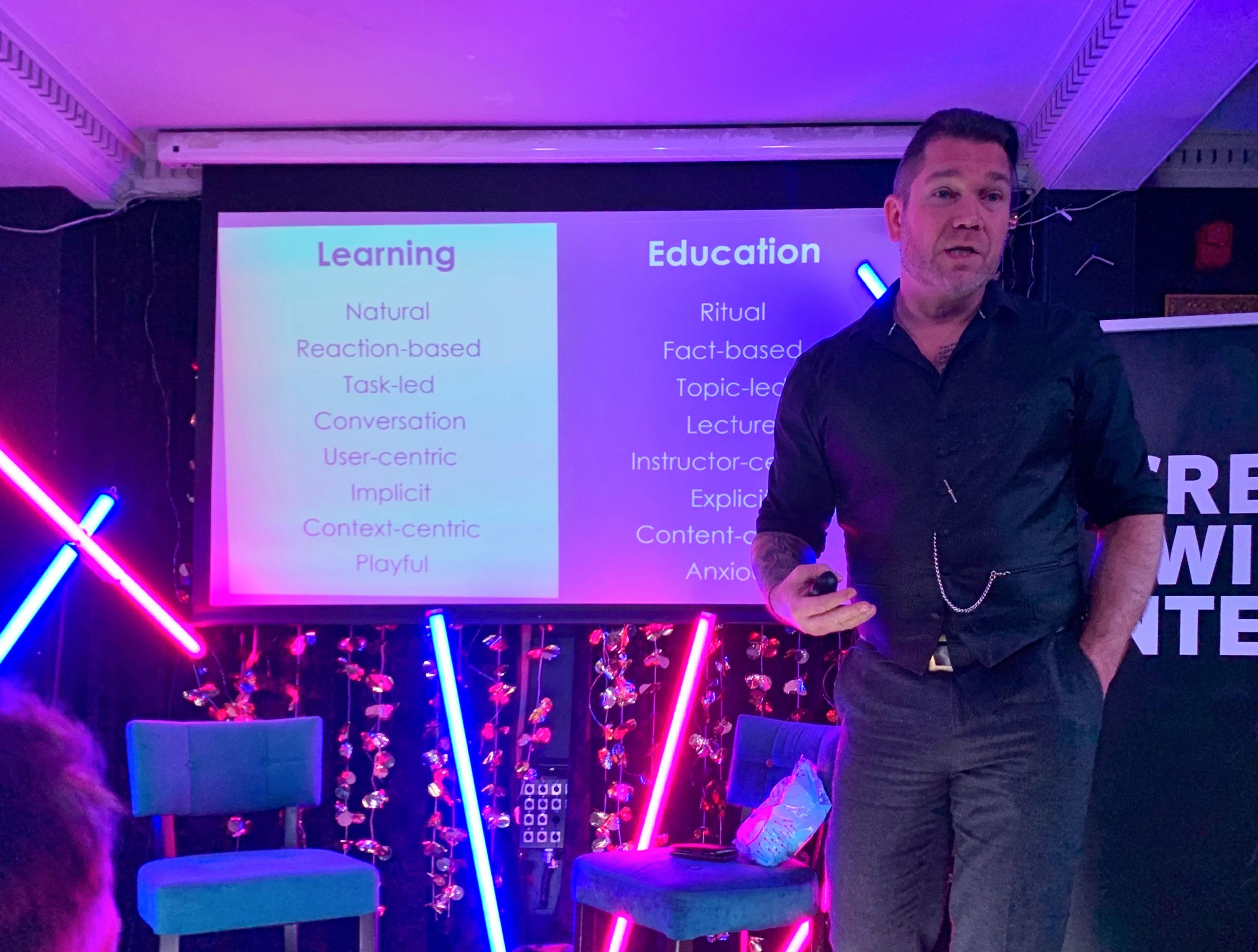Nick Shackleton-Jones is an entertaining and occasionally puckish speaker, and kept the Brighton audience for last night’s Tilt Talk on their toes with jokes, challenging questions, short activities and giant marshmallow-throwing.
And that wasn’t just playfulness, but illustrating one of Nick’s key points about how people learn: that we are much more likely to remember things when we are engaged and active. He joked that “something has gone horribly wrong”, that in spite of everything now known about learning, the audience was sitting there waiting to hear from “the sage on the stage.”
Drawing on differences between learning and education, Nick discussed the Ebbinghaus Forgetting Curve which, he argued, only shows “human memory is very good at throwing out rubbish.” And so, leads onto his particular theory as described in his book How People Learn.
Learning is emotional
In the Affective Context Model, Nick argues that learning is only made of emotional responses, from which the memories are reconstructed. This got me thinking about what might count as emotions, and also how I really got into cooking not from TV chefs and their overproduced programmes, but from the kind of shows that showed live cooking.
An important point here is that if we are engaged and motivated to learn, an educator merely needs to provide the resources. This is the Pull condition or what Nick calls “strong affective context”. In the “weak affective context” or Push condition, we need to provide experiences, narrative and more so that unmotivated learners become motivated.

Describing some of his work at BP, Nick described a very user-centred approach to understanding real needs. Don’t talk to stakeholders “about topics,” Nick says, “talk about what people need to do,” and then talk to those people about how to meet those needs.
In talks like this, we expect to hear about things that are exciting and innovative, but it was the inclusion of more ordinary tools that made me pay attention. These included factsheets and checklists that allow people to explore and understand a subject, and to help them take the right actions.
Perhaps I shouldn’t have been surprised as I’m a fan of tools built for explorability. The Design Process I helped build at BDP allowed different professionals to understand their responsibilities during any stage in a building’s design and construction. Also at BDP, redesigning the website, I made it a key principle that there would be no dead-ends in the primary information.
But, it’s not just about learning…
As I got to think about the importance of emotions in learning, it struck me that the same principles held true in internal communications and culture change. This shouldn’t have surprised me, as I’ve previously argued that learning is how organisations change.
It shouldn’t surprise me, or anyone working in learning, change, comms, or intranets, that this is all interconnected. We are all trying to win the limited attention of the same beleaguered employees, and that won’t work in the longer-term if the surprises become predictable.
That leaves listening and understanding as the tools we should all use. We can build tools that effectively support exploration and understanding, ones that can push users into the right learning, without creating too much noise for our colleagues. Choosing when and when not to use emotional hooks may be the most important thing we do.
Nick Shackleton-Jones is @shackletonjones on Twitter and his book How People Learn is available from publishers Kogan Page, or order it from your local independent bookshop.
